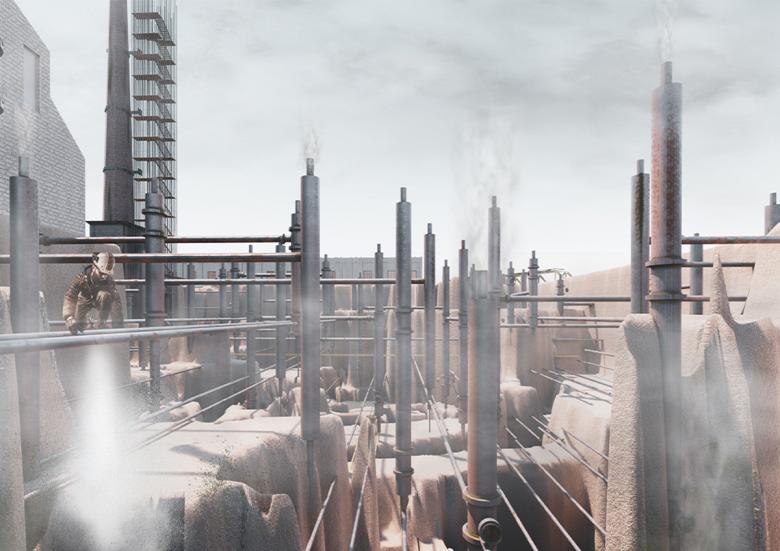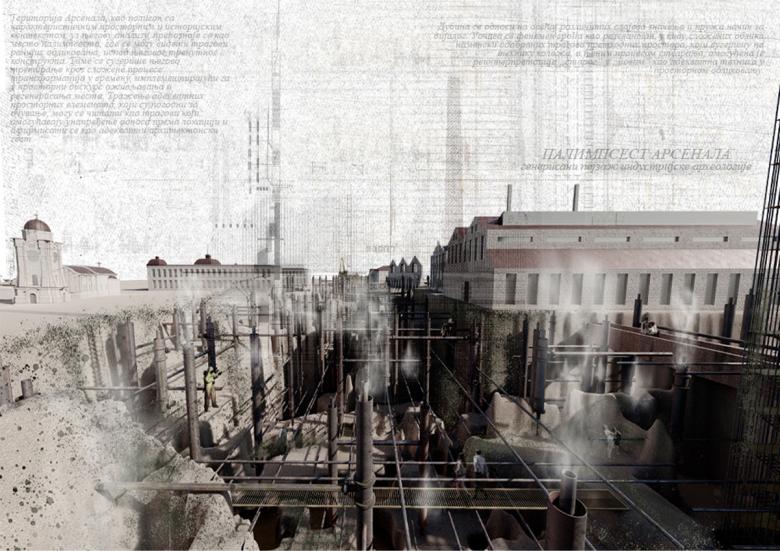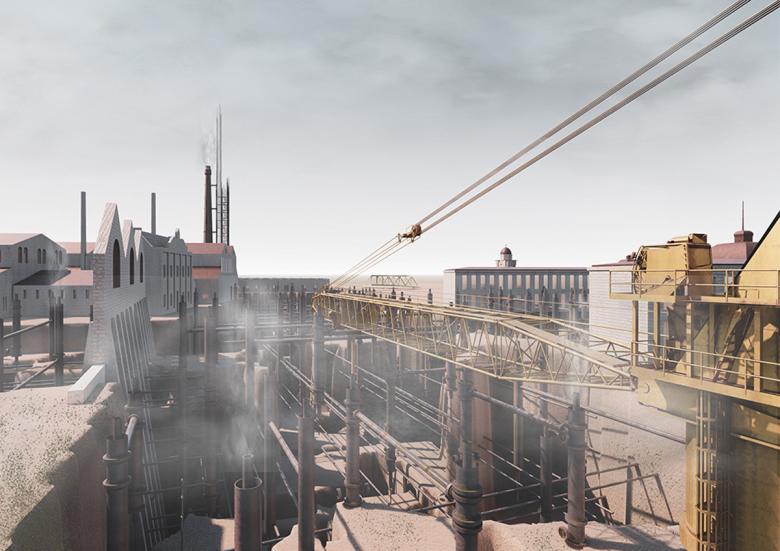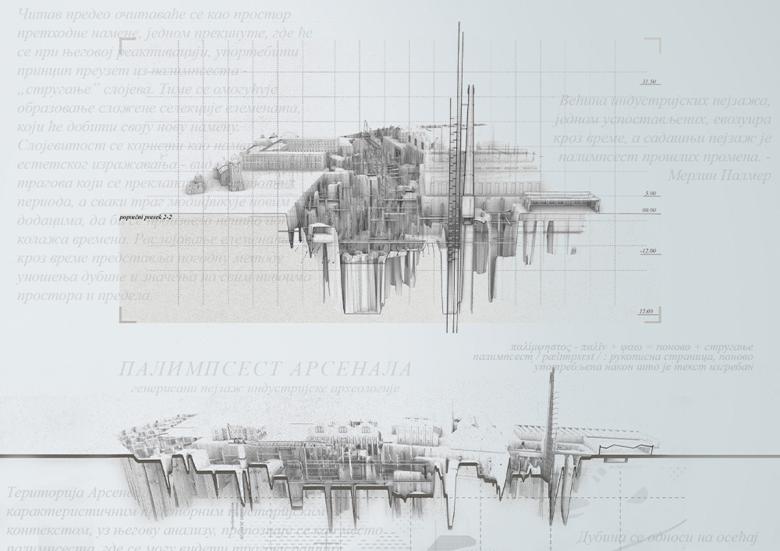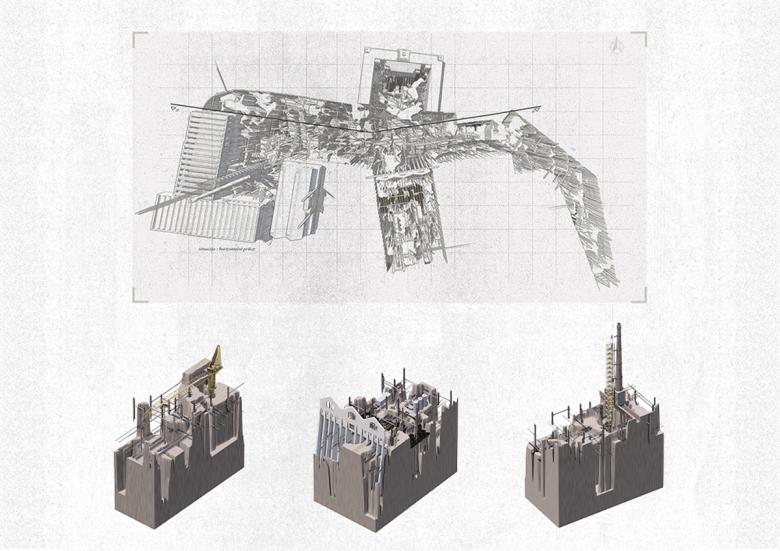Palimpsest of Arsenal
Torna alla Lista di ProgettiProject Location
Kragujevac, Serbia
Topic
Landscape Regeneration Industrial, Polluted
Program
Landscape Regeneration, Structure
Generated Landscape of Industrial Archeology
The Arsenal is a palimpsest with industrial heritage and a transformed urban landscape. The new relationship with the city emphasizes cultural heritage via a layered system of interventions. Industrial archeology is created by treating land contamination. Stratification systems unify passive and active systems, resulting in a new urban landscape.
The Arsenal's cultural and historical significance influenced the city's development and identity. Its industrial heritage can be interpreted into the cultural landscape of the city, but the modern treatment of the urban landscape has led to undefined conflict zones. A new approach is needed to create a comprehensive cultural heritage emphasizing human presence. The Knezev Arsenal provides an opportunity to generate a new urban landscape through cultural-historical industrial archeology, utilizing the strategic term "palimpsest." Interpreting the traces inscribed in its structure will еnable layering of its elements.
With its cultural and historical position, Knezev Arsenal influenced the development and identity of the place, and its industrial heritage is unequivocally identified with the cultural heritage of the entire city. By analyzing three key aspects of the Arsenal: industry, landscape, and archaeology, a methodological design approach taken from the palimpsest is formed - the layering of elements, their generation, transparent display, and emergence. This enables their decoding, re-understanding, reinterpretation of existing ones, and creation of new layers. The territory of the Arsenal, as a polygon with characteristic spatial and cultural-historical context, it is recognized as a place of palimpsest, where traces of earlier designs can be seen under its current construction. One of the key layers that stood out is the large soil contamination, under the influence of human presence through industry and bombing. The epicenter of the contamination is located in the central zone near the buildings of cultural importance. Soil stratification (in the excavation area at the site of the epicenter) and installation of the decontamination system is done gradually, making the pasive systems become spatial elements of the industrial landscape, while the active systems shape the productive landscape. With the creation of new layers, a productive landscape, and a decontamination system, the site of the Knezev Arsenal reads like a generated landscape of industrial archaeology. The main aspects of the design are guided by the idea of opening the Arsenal, which would create a new connection with the city, an enhanced experience of the layers of time, space, and culture, as well as the experience of the users in the space. By interpreting new relationships and traces that are inscribed in its structure, creating a new urban landscape, by generating it through the cultural-historical polygon of industrial archeology of the Prince's Arsenal, it represents a palimpsest place of the city.
